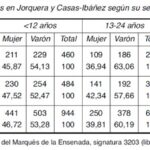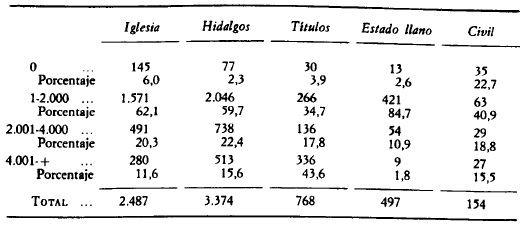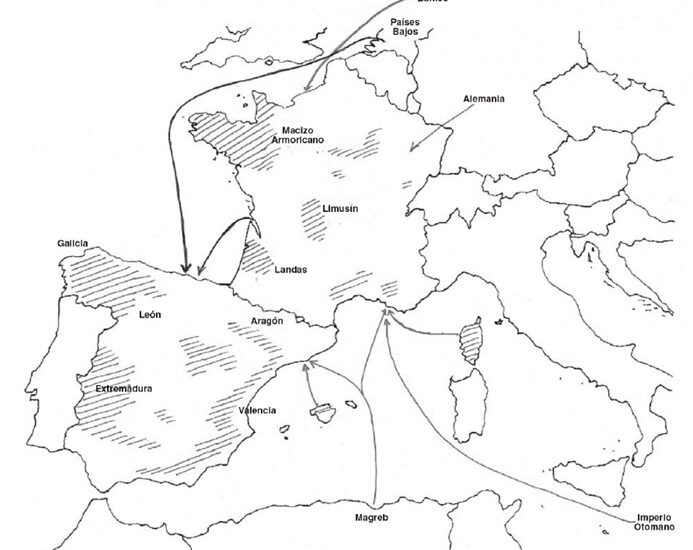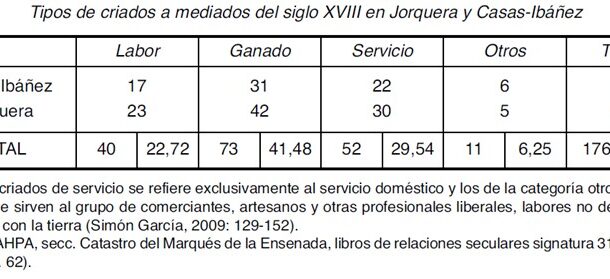
During the years of the Ensenada Cadastre, in the municipalities of Jorquera and Casas Ibáñez (Albacete) 78% of the children were under 18 years of age. Of these, 54% were male. Extending the margin up to the age of 25, the age at which they were considered to be of legal age in the mid-18th century, the figures only become more consolidated. From the age of 25 onwards, the number of offspring in the household dropped significantly to only 5%. The author offers us the key to the demographic dynamics of youth: the age of entry into marriage (23 for women and 25 for men). The later entry into marriage on the part of men underpinned their status as offspring belonging to the original family household, as they were conditioned by their father’s apprenticeship in the trade. In the families of artisans, muleteers or small farmers, this help in the workforce was an important added value. On the other hand, during the sample’s childhood, there was a predominance of males over females, confirming the demographic rule that, in general, more males than females were born.
Collection: Statistics
Project: 3. Rural world and urban world in the formation of the European identity., 4. Family, daily life and social inequality in Europe.
Chronology: XVIII
Scope: Secondary Education, Baccalaureate, University
Link: https://www.adeh.org/revista/2009,%202/MM%20SimA%CC%82%C2%A2n%20GarcA%CC%82%C2%B0a.pdf
Resource type: Statistics
Format: Table
Source: Simón García, María del Mar. (2009)."El hogar y su composición en la Mancha del Júcar a mediados del siglo XVIII", en Revista de Demografía Histórica, XXVII, 2, p. 168.
Language: Spanish
Date: 2009
Owner: Pablo Ballesta Fernández (Modernalia)
Copyright: ©Revista de Demografía Histórica ©María del Mar Simón García
Abstract: Example that analyses the dynamics of the offspring of families in two municipalities in central-southern Spain to see the life cycle in the creation of new family nuclei
Image
Tags








